Instructions for other Silvonic models:
Silvonic 1G (gallon unit)
The Silvonic kit contains:
- 1 Control unit with output wires ending in alligator clips that connect to the silver rods.
- 1 Universal 110-240V AC power supply.
- 1 Auxiliary power cable for use with any power supply (AC or DC 12 – 36 volts).
- 1 Clear plastic electrode disc that holds the silver rods.
- 2 U-shaped .9999 (99.99% pure) silver rods which will make around 100 gallons of 10 ppm CS.
- 1 TDS meter for testing the purity of the starting water and the approximate* strength of the final product. NOTE: The TDS meter reads 50% low. When it reads 005, you actually have 10ppm CS.
Brewing procedure:
1.) Test your distilled water with the TDS meter. It should read no more than 003 ppm for clear CS. (RO or de-ionized water can work if it reads low enough but will not make clear CS because of non-conductive particles which the TDS meter cannot detect.)
2.) Fill a glass container (8-16 ounces) with water almost to the top of the container to cover the maximum amount of silver. Heating the water (up to 120° F) speeds the process. Batches larger than a quart need mechanical stirring or a little heat from a lamp that will move the water by convection. We highly recommend making pint batches.
3.) Insert the silver rods into the holes of the electrode disc parallel to each other. If they fall out, hold both legs and gently spread them apart a little and re-insert. You should not have to twist or bend the rods!
The inner set of holes will make the generator turn off at about 10 ppm (005 on a TDS meter), the next set about 15 ppm, etc. After it shuts off, the reading will stabilize after a few hours. Set the electrodes close together (5 in the picture above) and end up with around 10 ppm (actual).
4.) Place the electrode disc on the container with almost all of the U-shaped silver rods in the water. Attach the output clips to the taller ends of the rods. NOTE: Connect output wires only to silver, not power!
5.) Plug in the AC power supply to a wall outlet and connect to the Silvonic. The LED light on top of the case will light up (faintly at first with very pure water) and change from green to red and back every 5 minutes or so, showing the change in electrode polarity. This SWAP technique minimizes build-up on the rods and the need to stir batches under 1 quart, as well as making the electrodes wear evenly. The LED will not light up unless the electrodes are in water. The LED brightness indicates current flow.
The Silvonic shuts itself off when it detects enough silver ions in the water. Once the light goes out, use your TDS meter to see if it has the strength you want. If not, move one or both electrodes farther apart and restart, or wait a few hours for it to stabilize and restart. Concentrations above 15 ppm will have larger particles not optimal for internal use. You can make batches of any size but it will take longer. Batches larger than 1 quart (1 liter) require stirring for best results. Unplug between uses. Note: Once the Silvonic switches off, disconnect power and reconnect to restart.
A Note on PPM and TDS Meters:
TDS meters can only give an approx of the ppm since they are calibrated with salt. We believe that most TDS meters read low by as much as a factor of 2. If your TDS meter reads between 5 and 10 ppm, you really have 10-20 ppm. Therefore we recommend starting out with the rods in the innermost (5ppm) positions. Once the batch stabilizes, you should have between 10 and 15 ppm CS.
Brewing time:
A pint (.5 liters) batch may take 6-8 hours using the 10 ppm electrode position and room temp water. Faster CS Generators cannot make the Silvonic’s ultrafine CS with nano-particles and high ionic content.
Note: Strength (ppm) matters less than particle size and ionic proportion. TDS meters only give a rough approximation of strength. 5 to 15 ppm Colloidal Silver works best internally. Instead of making it stronger, just drink more! CS works best when fresh but retains its potency for many months if stored in glass at room temp.
Electrode care:
Lightly wipe clean with a cloth between uses but do not scrub hard or use cleaners or polish. If you see much build-up on the electrodes, pull them out of the water and wipe them off, then put them back in the water. Very pure water will prevent this build-up. You can pour the CS through a coffee filter or decant it if you see sediment in the container, although the residue will not cause problems. One pair of electrodes will make about 100 gallons of 10 ppm Colloidal Silver.
Troubleshooting:
If the light does not come on with the rods in water, first make sure that the wall outlet has power. Remove the power plug from the generator and then reconnect it. Connect the output clips together and watch the light turn on briefly and go off after a few seconds. If this test works, the generator works properly. Disconnect from power, connect the clips to the silver rods and reconnect to power to start brewing. If the Silvonic stops before getting as strong as you want, move one or both rods to the next position (farther apart). If this does not solve the problem, contact us.
Quick test and reset for Silvonic CS Generators:
Disconnect from power. Disconnect cables from silver rods and clamp one clip onto the other. Connect power and watch the green/red light. It should come on for a few seconds and shut off. If it does, the device functions properly, and you should consider the other variables, eg water quality, jar cleanliness, water level and/or temperature, etc. (See maintenance tips below.)
If the light does not come on, and you know that the wall outlet has power, try using 18-36V AC or DC (eg, 2-4 9V batteries in series) with the auxiliary cable. If that works, you need a new power supply. If it still does not turn on, contact us.
If the green/red light comes on but does not turn off in a few seconds, contact us.
General maintenance tips:
Scrub the rods lightly with a plastic pad, cloth, etc. They do not have to shine. NOTE: If you use good distilled water, the rods will seldom need cleaning.
Scrub the glass container to remove any build-up on the sides and bottom. Rinse it well with distilled* water. Fill the jar with good distilled* water to cover the rods without touching the plastic sockets.
*Good distilled water should read no more than 3 µS/TDS (ideally 0) with the meter. NOTE: If you buy distilled water in plastic containers, transfer it into glass if you plan on keeping it for very long. Distilled water leaches plastic over time and will contaminate your CS even though the meter reads 0.
NOTE: A pint (16 oz/.5L) jar works best, but up to a quart (32 oz/1L) works without stirring but takes longer and may have more residue on the bottom. You can speed up the brewing process by keeping the water warm (not more than 100º F) and/or by adding enough previously made CS to bring the initial reading up to 4-5µS.
If you need to make larger quantities than 1 quart, we have the Silvonic Turbo which can make a half gallon (64 oz/2L in around 3 hours or a gallon in 4-5 hours without stirring. See www.elixa.com/shop/silvonic-turbo-colloidal-silver-generator
Storage:
The CS you make with the Silvonic will stay potent and stable for a long time (months) but works best when used fresh. Do not refrigerate or freeze. Exposure to light will not harm properly brewed CS. Store in a non-metal container. We prefer glass, but good quality plastic works too (recyclable #1 “PETE”).
Color:
10 ppm CS (005 on meter) should look clear to pale yellow. Various environmental factors and contaminants can make CS turn colors. Note: Even if water reads 000, it may still have non-conductive particles which can produce some color. Strong yellow CS works well externally.
Using the Silvonic with other power sources:
Use the auxiliary power cable with alligator clips that plugs into the power jack. Attach the clips to 12-36 volts AC or DC. Polarity does not matter. For example, 3 or 4 nine volt batteries hooked together in series, solar panels, automobile batteries, and most wall chargers work.
Water Test: (If you don’t have a TDS meter)
1] Plug everything in with the electrodes in the 15 PPM (1.5” apart) position.
2] Short the electrodes together briefly with a spoon to see how bright the LED shines at max current flow.
3] You may have noticed that the LED brightens up as you lower the generator and electrodes into the water and gets dimmer as you pull it out. If it doesn’t dim as you pull it out or it gets fully bright before it’s nearly seated in the container, the water has too many contaminants (minerals and chemicals). The LED may be too dim to see in a brightly lit room when using very pure water. If the LED doesn’t get dimmer as you first start to pull the electrodes from the water, the water has too many impurities. Make sure you have properly distilled water.
Thermal Stirring:
Making a pint or less does not require stirring but it may improve the CS. Painting or applying dark tape to one side of the container and exposing to sunshine or a nearby light (eg, desk lamp) will stir the water by applying a temperature difference, making the warmer water rise and the cooler water sink.
The Silvonic Plus adds 2 switches: a DC mode (non-alternating) that will brew faster by disabling the SWAP function and a Manual Mode so it will not shut off automatically. Switch to SWAP and AUTO for auto-shutoff.
LIFETIME WARRANTY:
Elixa will repair or replace the Silvonic CS Generator as long as you own it! (Void if back opened, output leads connected to power, or physically damaged.)



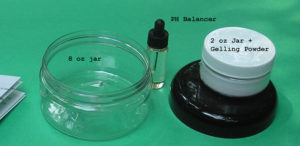
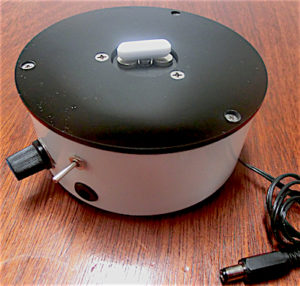
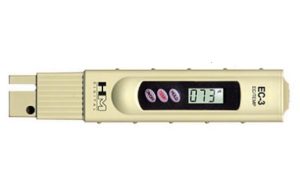
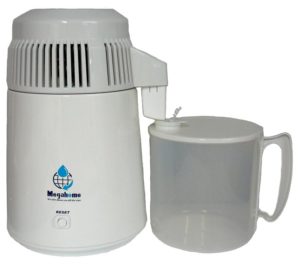
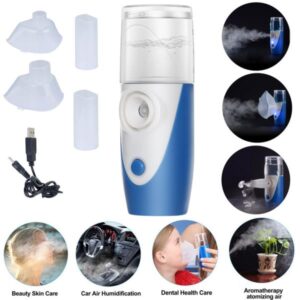
Pingback: Silvonic Turbo CS Generator Instructions - Elixa